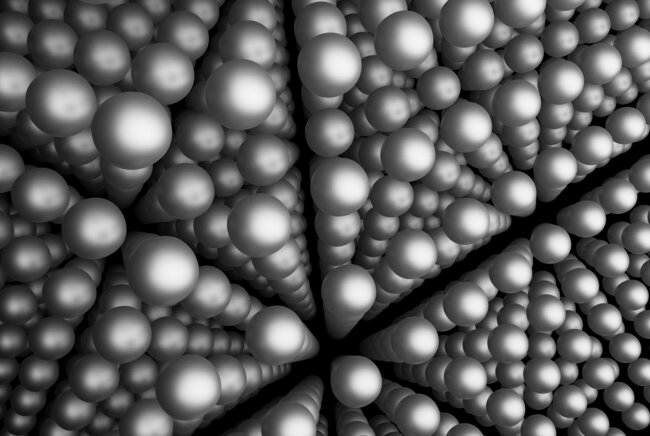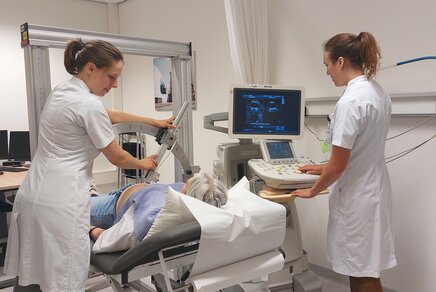Functionalized planar probe for advanced scanning probe microscopy
Tunç Ciftci defended his PhD thesis at the department of Applied Physics on November 18th.

If you want to learn more about the surface of materials at the nanoscale, scanning probe microscopy is the tool of choice. The technique moves a probe or tip across the surface of the material of interest. Numerous variations, such as atomic force microscopy, have been developed for nanolithography and data-writing. One drawback with many variations of scanning probe microscopy is that are limited to just a few applications. For his PhD research, Tunç Ciftci developed a new force-sensing platform called retuned tuning fork that can be used for a wide range of applications. The platform includes chip-like probes with a standard atomic force microscopy that retain its force-sensing capabilities.
In the scope of fundamental studies and research in nanotechnology, scanning probe microscopy (SPM) is the ultimate tool to probe the surface of materials. Shortly after the introduction of the two main SPM approaches, scanning tunneling microscopy (STM) and atomic force microscopy (AFM), several variations were developed for use on a wide-range of applications such as non-invasive near-field detection and probe-assisted nanolithography.
Newton’s third law
The main element of an SPM system is a tiny tip in a needle-like shape with a sharp end that can interact in different ways with the surface such as electrical, mechanical, chemical, magnetic, and thermal. Near-surface detection relies on the exerted force from the substrate to the tip. Based on that principle, the first variations achieved interaction-specific sensitivity simply by coating a traditional tiny tip. For instance, magnetically coated tips paved the way for spin-polarization sensitive STM (SP-STM) and additional magnetic stray field detection in AFM (better known as MFM).
According to Newton's third law, which states that for every action there is an equal and opposite reaction, the tip exerts the same force towards the substrate in the opposite direction. As a result, such tip-sample interactions can affect the material surface, which in the context of memory devices could scale the bit size down to atomic dimensions.
Needle issues
Although using such specific tip-sample interactions led to unique solutions, applications remained limited. This limited application is what motivated the PhD research of Tunç Ciftci, along with his colleagues at the Physics of Nanostructures group in the department of Applied Physics at TU/e to design and build a new SPM device.
“As addressing the origins of current limitations marks our study's starting point, we decided to shine a spotlight on the two main components of conventional atomic force microscopy: the tiny tip in needle-like form,” says Ciftci.
Extra functionalities
More advanced nano-applications are possible by adding extra functionalities to the tip, such as built-in signal compensation and generation modes.
“We highlight the chip-like thin-film probes as the ultimate platform for the next generation SPM with their unorthodox geometries, which have the potential for advanced tip engineering far beyond traditional needle-like tips,” notes Ciftci. “The planar geometry of these probes can result in enhanced SPM tips by enabling micro-circuit tailoring near the tip in combination with ultra-thin-film engineering, even though they are still far behind their operational capacities.”
However, this type of probe has been mainly used in scanning tunneling microscopy (STM) so far, while their use in atomic force microscopy (AFM) has been either unfeasible or led to significant degradation of the fundamental functions of AFM.
Tuning fork
In his thesis, Ciftci presents a new force-sensing platform referred to as retuned tuning fork that integrates chip-like probes with a standard AFM, while at the same time, maintaining its intrinsic force-sensing capabilities.
Results in thesis indicates that this easy-to-implement approach can propel the atomic force microscopy tip from a passive tool into a thriving platform as a dedicated microdevice with extended functionality. To properly uncover the applicability of this approach, Ciftci and his collaborators demonstrated two preliminary applications in AFM-tip-assisted thermomechanical surface patterning and MFM-probe with controllable tip magnetization.
Title of PhD thesis: Functionalized planar probe for advanced scanning probe microscopy. Supervisors: Bert Koopmans, Kees Flipse, and Oleg Kurnosikov. Other parties: NWO-TTW.
Media contact
Latest news


